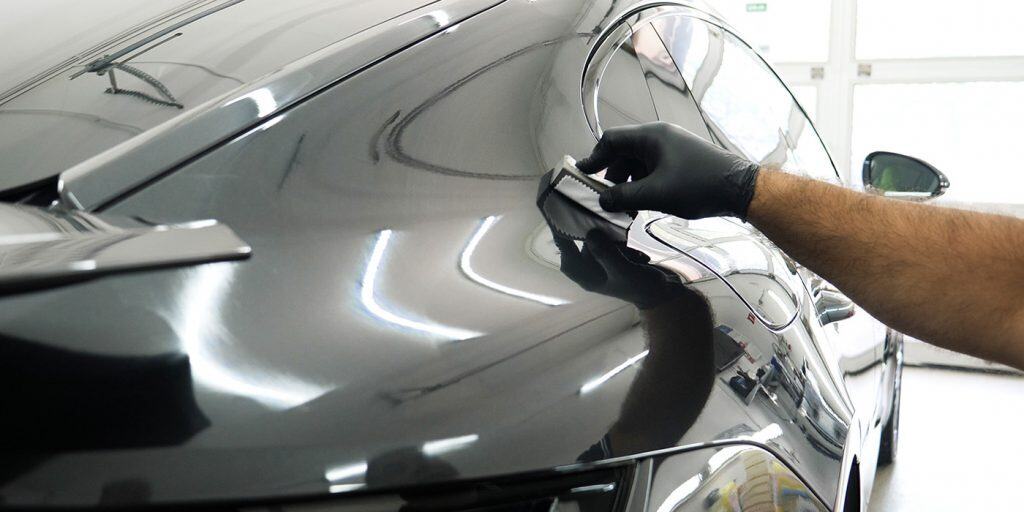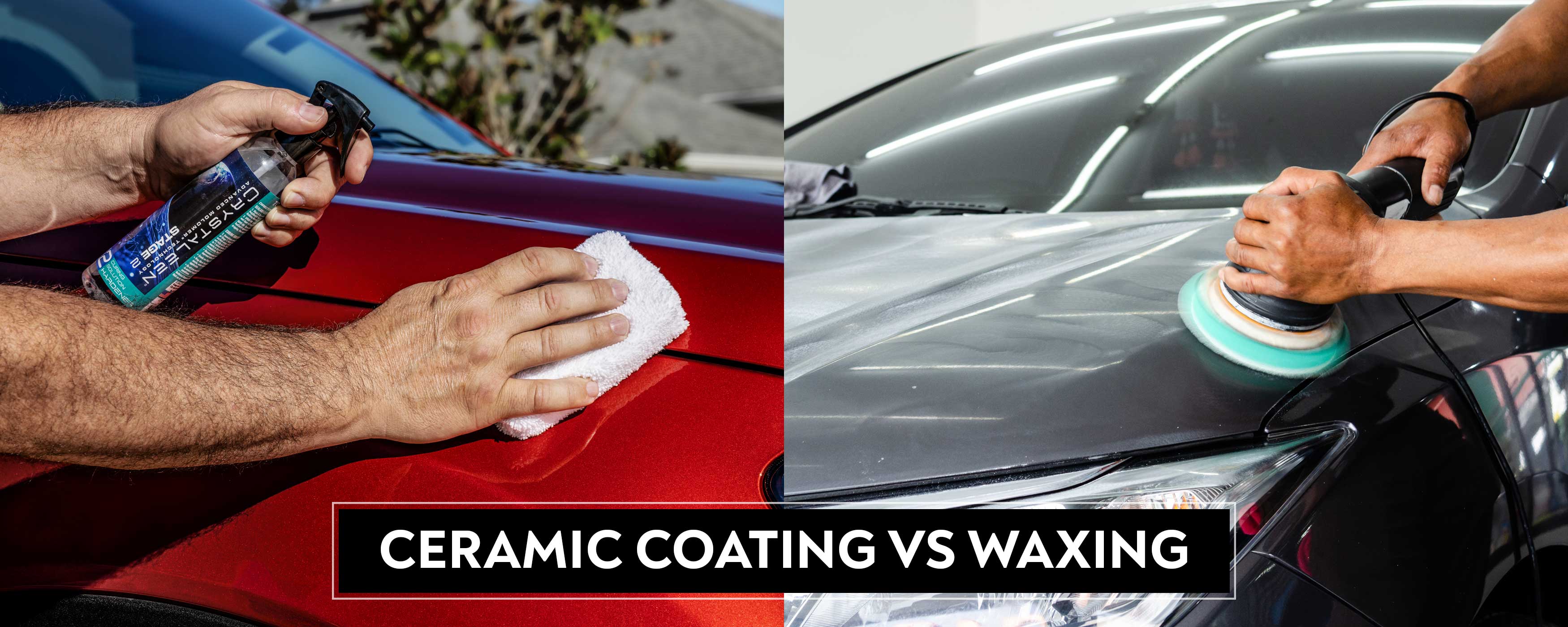Everything You Need to Know About Ceramic Coating for Cars
Everything You Need to Know About Ceramic Coating for Cars
Blog Article
Ceramic Layer vs. Conventional Wax: Which Supplies Much Better Long-Term Defense?
The discussion between ceramic finishings and typical wax for automobile defense has actually gathered considerable attention among automobile enthusiasts and experts alike. While both serve the objective of safeguarding paint, their differences in longevity, application, and lasting upkeep prices might influence a customer's choice. Ceramic finishings flaunt exceptional durability and resistance to environmental factors, yet the complexity of their application elevates concerns concerning access and functionality. As we discover these contrasting choices, it becomes important to consider not just the immediate benefits however also the implications for vehicle treatment gradually.
Review of Ceramic Finishing
Ceramic coating has gotten substantial popularity amongst automotive fanatics and detailers alike because of its sophisticated safety top qualities. This innovative modern technology is created to create a durable, hydrophobic guard over a car's paint surface area, dramatically boosting its resistance to environmental pollutants such as dirt, UV rays, and chemical stains. Unlike standard wax, which offers a short-lived layer of security, ceramic coatings bond at a molecular degree with the paint, offering resilient longevity-- usually prolonging beyond two years with proper maintenance.
The application process entails precise preparation of the automobile's surface area, including cleansing and polishing to make certain optimal bond. As soon as applied, the finish cures to form a robust layer that not only includes depth and gloss to the paint but also simplifies upkeep. With its hydrophobic homes, ceramic finishing permits water and dust to glide off even more conveniently, decreasing the regularity of laundries and reducing the danger of swirl marks.
In addition, ceramic finishes are offered in numerous formulas, allowing users to choose products tailored to their specific requirements and choices. Overall, ceramic layer represents a significant improvement in paint protection technology, supplying premium performance contrasted to traditional options.
Summary of Typical Wax
Commonly considered as a staple in auto treatment, wax acts as a popular choice for those seeking a straightforward approach to boost and shield their lorry's paint - ceramic coating. Automotive wax generally comprises all-natural components, such as carnauba, or artificial substances, created to create a safety layer externally of the paint. This layer not just improves the vehicle's gloss and beam but likewise offers a barrier versus environmental impurities
The application of wax is normally straightforward, making it accessible for both professionals and Do it yourself lovers. Once used, wax requires a healing duration, after which it sets to develop a safety covering.
Nevertheless, while wax works for enhancing the aesthetic appeal of a lorry, it is essential to keep in mind that the protection it offers might demand more regular reapplication compared to different products, such as ceramic layers. Overall, standard wax continues to be a popular alternative for those prioritizing ease of use and instant aesthetic renovation.
Resilience and Longevity Comparison
While both ceramic finishes and typical wax deal protective advantages for vehicle paint, their longevity and longevity vary considerably. Standard wax, normally made from all-natural carnauba or artificial polymers, typically gives a safety layer that lasts about 3 to six months. This reasonably brief lifespan necessitates regular reapplication to keep ideal protection.
In contrast, ceramic layers are crafted from sophisticated nanotechnology, developing a covalent bond with the paint surface. This leads to a durable, hydrophobic layer that can endure for two to five years, depending on the item and ecological problems. The superior durability of ceramic coverings is attributed to their chemical structure, which uses improved resistance to scrapes, UV rays, and oxidation.

Protection Against Environmental Elements
Safeguarding a vehicle's paint from ecological elements is important for maintaining its look and value in time. Automobiles are regularly subjected to a selection of aspects, consisting of UV rays, bird droppings, tree sap, acid rain, and roadway grime, every one of which can jeopardize the stability of the paintwork.
Ceramic coverings give a robust protection against these environmental aggressors. Unlike typical wax, which can deteriorate promptly under UV exposure, ceramic finishings develop a durable, hydrophobic layer that stands up to the hazardous impacts of sunshine and ecological pollutants. This sophisticated modern technology creates a chemical bond with the car's surface area, providing remarkable defense that lasts for several years, even in severe problems.
Typical wax, while easier to apply, usually calls for frequent reapplication and offers limited resistance to contaminants and UV rays. Over time, it can damage down, leaving the paint vulnerable to scratches and oxidation. In comparison, ceramic finishes maintain their safety qualities much longer, substantially lowering the threat of paint damage and making certain that the lorry retains its visual allure. Because of this, ceramic coverings are progressively recognized as the exceptional option for long-lasting security against environmental variables.
Application and Maintenance Differences
The approaches of application and succeeding upkeep for ceramic coverings and standard wax differ dramatically, impacting the general customer experience and efficiency of each item. Ceramic layers need an even more detailed application procedure, commonly entailing surface prep work that consists of cleaning, decontaminating, and brightening the vehicle. When the surface area prepares, the ceramic layer is applied in a regulated environment, often requiring professional competence to make certain proper healing and bonding to the paint.

While both items enhance car appearance, the longer-lasting security used by ceramic layers might justify their first financial investment, despite the even more requiring application process. On the other hand, standard wax continues to be a view publisher site preferred choice for those looking for an easier, albeit temporary, option.

Final Thought
To conclude, ceramic layers demonstrate substantial advantages over conventional wax in regards to resilience and environmental management. With a lifespan extending two to five years and exceptional resistance to UV rays, dirt, and chemical stains, ceramic layers use a more efficient remedy for lasting automobile maintenance. Although the application process may call for specialist proficiency, the resulting expense savings and decreased frequency of reapplication underscore the worth of ceramic finishings for those looking for ideal automobile security.
The discussion in between ceramic coatings and traditional wax for car protection has amassed considerable focus amongst auto fanatics and professionals alike. Unlike traditional wax, which offers a short-term layer of security, ceramic coatings bond at a molecular degree with the paint, using long-lasting sturdiness-- commonly extending past 2 years with proper upkeep.
While both ceramic finishes and conventional wax deal protective advantages for automobile paint, their longevity and durability vary considerably. For car lovers looking for long-term security, ceramic finishes present an engaging benefit over traditional wax products.
In final thought, ceramic coverings show considerable advantages over standard wax in terms of toughness and ecological defense.
Report this page